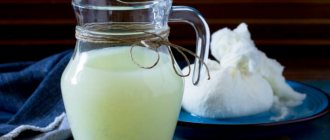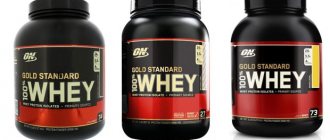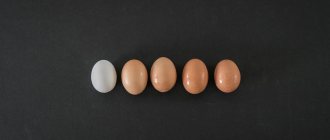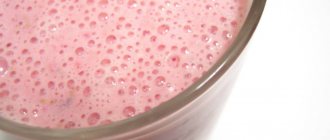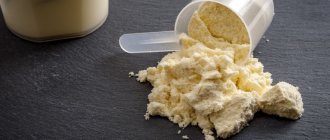© JANIFEST — depositphotos.com
Share:
Protein concentrate is a sports supplement containing purified protein. It comes in various origins: egg, whey, plant (including soy) animal. There are no artificially synthesized concentrated proteins.
Whey concentrate is the most popular and most commonly used form of protein, which is used in sports to build muscle mass and during the cutting period to accelerate weight loss. Many athletes take the supplement periodically to maintain good shape.
What is whey concentrate
Whey protein is a source of purified protein. It is completely absorbed and consumed by the body.
Protein is used for the following purposes:
- building muscle mass;
- protein compensation during a mono-diet;
- minimizing the loss of muscle tissue during drying;
- maintaining shape and relief during training.
Protein mixtures are in demand among professional bodybuilders, weightlifters, and just sports fans. The nutritional supplement is suitable for both male and female bodies.
Composition, what it is made from
Protein is the basis of any protein supplement. One serving contains on average 25 g of protein, 4 g of carbohydrates, 2 g of fat, 400 mg of nutrients (potassium, sodium, calcium, cholesterol).
The basic components of the mixture always remain the same. Manufacturers can change the quantitative composition of microelements, add vitamins, natural or synthetic flavors.
The mixture is obtained from filtered whey. The concentrate production process can be reflected in the form of a diagram:
When milk is fermented, the curds are separated. It retains the bulk of milk protein (or casein). The remaining liquid is whey, which serves as the basis for protein.
The resulting solution is heated at a temperature of 72 degrees. The consistency goes through several stages of filtration and drying. The output is protein, ready for consumption. To improve the taste of the powder, the manufacturer adds flavorings and sweeteners.
Whey mixture is not only produced as a concentrate. Further processing of the product makes it possible to obtain a higher quality protein, practically free of fats and carbohydrates - isolate. The highest degree of processing is hydrolyzate. The product contains 99% pure protein. The disadvantages are the high price and unpleasant taste.
Nutritional properties and protein quality
Proteins vary in biological value. These differences are determined by two factors - the content of essential amino acids and the degree of digestibility. The combination of these two factors creates the concept of “protein quality.”
By modern standards, only protein can be considered high quality if its essential amino acid content exceeds the reference level set by the FAO (Food and Agriculture Organization), UNU (United Nations University) and WHO (World Health Organization). Also, a high-quality protein should be comparable or superior in absorption to egg or milk protein. From this point of view, the quality of animal proteins is higher than the quality of plant proteins.
Limiting amino acids
In most legumes and grain crops, proteins are limited by at least one of the essential amino acids. For example, rice, wheat, barley and corn are rich in methionine, but they have very little lysine. Legumes and oilseeds have the opposite – they contain a lot of lysine and a lack of methionine. And peanuts are low in both methionine and lysine. Such amino acids, which are less in a particular protein than in the reference protein, are called limiting. It is important that the diet contains sufficient amounts of all essential (essential) amino acids. Otherwise, pathologies may develop in adults, and growth slows down in children under 12 years of age.
Leucine, isoleucine, valine, histidine and phenylalanine are essential acids that are almost never limiting, that is, in all types of protein, regardless of origin, the content of these amino acids is sufficient or even excessive. Lysine, threonine, tryptophan and all sulfur-containing amino acids become limiting most often. Today it is quite easy to correct the problem of limited proteins by combining them with other proteins rich in amino acids, which act as limiting for the original protein. For example, legume and grain proteins are effectively combined. That is, a diet that contains proteins of both types will contain all essential amino acids in a volume sufficient to ensure normal growth and vital functions of the body.
This problem can be solved not only by correct formulation of the diet, but also in production through supplementation - enriching the protein with an amino acid, which is limiting for it. In this way, the biological value of low-quality protein can be increased. For example, the nutritional quality of legumes is enhanced by fortification with methionine, and cereals are correspondingly enriched with lysine.
Optimal biological value of protein
The optimal biological value of a protein is considered if it contains all the essential amino acids and their volume is sufficient to ensure all growth processes in the body and other metabolic processes at a normal level.
The difficulty is that for each person from any category of the population, their daily amount of amino acids is optimal, which is determined based on physiological indicators, daily routine, diet, living conditions and many other factors. WHO and FAO recommend using a universal standard, which is used to determine the optimal biological value of the protein component of the diet in preschool children 2-5 years old.
Too much amino acid consumption is dangerous because it leads to “amino acid antagonism”, accompanied by food poisoning. If there is an excessive amount of one amino acid in the diet, this leads to a deficiency of other amino acids, since competition begins between them for priority of absorption in the intestine (that is, some amino acids simply will not have time to be absorbed).
For example, if there is an excess amount of leucine in the diet, it is absorbed in the intestine over isoleucine, valine and tyrosine. And even if these three amino acids are present in the diet in sufficient quantities, their deficiency occurs, which can also lead to growth retardation in children and the development of pathological conditions in adults.
Protein Digestibility and Conformation
Although the volume of essential amino acids is the predominant factor, digestibility is also important for protein quality - this indicator reflects the percentage of protein that is absorbed by the intestinal walls. For example, for milk it is 95%, and for rice 75%. Accordingly, to cover the daily requirement of the same amino acids, a significantly larger volume of rice protein is needed in comparison with milk protein (that is, it is really difficult to “full” the daily intake of risky protein). In general, animal proteins are better absorbed than plant proteins.
In production, proteins are often hydrolyzed by proteases (enzymes that cleave the peptide bond between amino acids); the degree of this effect depends on the structural state of the protein. Native (undenatured) proteins are hydrolyzed significantly less than denatured ones. Insoluble fibrillar proteins and globular proteins, which are already completely denatured, are practically not subject to hydrolysis.
An example is phaseolin (bean protein), which can be hydrolyzed by proteases and in this case will be only partially cleaved, releasing polypeptides with a molecular weight of up to 22,000 Da. But if phaseolin is hydrolyzed by proteases during heat treatment, it will completely decompose into amino acids and dipeptides.
Which is better: whey protein concentrate or isolate?
The dried powder in the form of a concentrate contains no more than 80% protein, the remaining 20% are carbohydrates and fats. When producing whey isolate, the protein content is increased to 90%.
Be sure to read: What to eat before training: top best foods for gaining weight
The differences between the two forms of whey concern not only the nutritional value of the mixture, but also the price component.
Ratio of indicators per 1 serving of product (100 kcal):
| Options | Whey Protein | |
| Isolate | Concentrate | |
| Treatment | Better quality | Minimum |
| Protein | 23 g | 18 g |
| Carbohydrates | 1 g | 3.5 g |
| Fat | 0 g | 1.5 g |
| Lactose | less than 1 g | up to 3.5 g |
| Price | High | Low |
Each type of protein has its own purpose. Whey concentrate is used more during the period of weight gain. High-protein isolate is indispensable for weight loss and cutting, suitable for people with lactose intolerance.
Factors that reduce the biological value of protein
Most plant proteins in the form of concentrates and isolates contain trypsin and chymotrypsin inhibitors. These substances significantly slow down the process of hydrolysis of proteins from legumes and oilseeds, and also prevent their complete hydrolysis by pancreatic protease enzymes. Also, these plant proteins contain lectins (glycoproteins that “glue” carbohydrates together). Lectins bind to cells lining the intestines, which prevents amino acids from passing through the intestinal wall.
Some trypsin and chymotrypsin inhibitors (Bauman-Birk type) are thermostable, while others (Kunitz type) are thermolabile (that is, not resistant to heat). Lectins are also heat labile. This means that after undergoing heat treatment, proteins from legumes and oilseeds are better absorbed (even better than isolates of native proteins).
Plant proteins contain tannins and phytates, which also reduce their biological value. For example, tannins interfere with the breakdown of polypeptides, a process that is catalyzed by trypsin. Also, the rate and completeness of protein hydrolysis decreases during their interaction with polysaccharides and dietary fiber.
Assessment of the biological value of proteins
Assessing the biological value of protein for producers is necessary because it allows identifying the most gentle methods of exposure, which maximize the nutritional value and functional properties of the native form (for example, the ability of lacto-globulin to transport Vitamin D3 in the intestine and the ability of lactoferrin to stimulate the development of beneficial microbiota).
For the end consumer, assessing the biological value of protein is also important; it allows you to accurately determine the optimal amount of a particular protein (or combination thereof) in the diet, avoiding deficiency and “amino acid antagonism” in excess. To carry out such an assessment, a diet with a protein content of 10% (by dry weight) is used, ensuring its energy value. Over the course of 9 days, changes in body weight are measured and the result is a protein efficiency ratio (PER) - this is the weight gain in grams per 1 gram of protein consumed.
Another indicator is the net protein efficiency ratio (NPR), which is calculated by subtracting weight loss from the protein-free group from the weight gain indicator and dividing the result by the amount of protein absorbed. The NPR indicator reflects the ability of the tested protein to effectively support the growth and functioning of the body.
There are other methods for assessing the biological value of protein, including enzymatic and microbiological. For example, the protein can be digested in the laboratory with pepsin, pancreatic trypsin, or pancreatin. This makes it possible to assess the speed and completeness of protein digestibility, as well as to determine whether any changes have occurred to it during industrial processing.
Types of sports supplements
Today, a large number of different protein complexes are produced. Powdered supplements are sold in sports nutrition departments or specialized online stores.
A wide range of products confuses novice athletes. An incorrectly selected supplement will not bring the desired effect; in some cases, the result will be exactly the opposite.
There are more than 8 types of sports supplements. The speed of achieving the goal is influenced by the type of protein base of the product.
Egg protein concentrate
The product is made from egg whites. It is a completely natural and safe supplement.
What you need to know about egg white:
- It has the greatest biological value.
- 100% absorbed by the body.
- Does not contain lactose, cholesterol, fat.
- The most expensive among all supplements.
The mixture is universal for use at any time of the day. Validity period: 3-5 hours.
Milk protein concentrate
The powder is obtained from milk. Contains 25% whey protein, the rest is casein.
Product Feature:
- Contains calcium, amino acids, minerals.
- Has a good degree of absorption.
- Not suitable for lactose intolerance.
- Reasonable price.
Use as a snack or drink at night. Duration of action – 4-6 hours.
Soy protein concentrate
Produced on the basis of plant components. Soy protein contains an incomplete group of amino acids, is poorly soluble in liquid, and has an unpleasant aftertaste.
Main advantages:
- Reduces cholesterol levels and starts metabolic processes.
- It is popular among girls as it promotes the production of female hormones.
- Suitable for vegetarians or those who cannot digest dairy products.
- Reasonable price.
Be sure to read: What you need to eat to gain muscle mass: rules, food list, menu for every day
Used after sports or between meals. Valid for 4-5 hours.
Casein food
Casein is a traditional product of the dairy industry. In the past, it was widely used for technical purposes, including as glue for aircraft (the period of the Great Patriotic War 1941-1945). Currently, in the future, we use this most valuable natural protein of raw milk exclusively for food purposes. One of the conditions for this is the high quality of food grade products. To ensure this, modern technology and expertise are required.
Production technology. The essence of the technology for producing casein is to ensure acid or rennet coagulation of milk proteins of this fraction, followed by separation of the sediment, its washing, dehydration and drying. The technology for producing casein is shown in Figure 1.
Figure 1 - Casein production diagram
Skim milk with an acidity of no higher than 21 °T and a fat content of no more than 0.05% is subjected to mandatory heat treatment - pasteurization at 72-74 °C for 15-20 s and cooled to 30-39 °C. If it is necessary to store skim milk, it is cooled to 6-8 °C. Skim milk is heated before use.
Coagulation (precipitation) of casein is carried out with rennet, hydrochloric acid, fermentation or the addition of acid whey mixed with the enzyme.
Precipitation of casein with rennet is carried out similarly to the production of cheese: adding an enzyme solution and allowing the mixture to coagulate (form a clot).
Precipitation of casein with hydrochloric acid (1 M solution) is carried out at a temperature of 37 ± 2 ° C with continuous stirring of skim milk or in a stream with the pH adjusted to 4.4-4.2, which corresponds to a titratable acidity of 48-53 ° T. The acidified mass is kneaded (or kept in a stream) for 3-5 minutes to obtain homogeneous grain.
Precipitation of casein with lactic acid is carried out by fermentation or adding acid whey with an enzyme.
Fermentation is carried out at a temperature of 30-32 °C in winter and 28-30 °C in summer with a starter specially prepared with skim milk. The starter is added in an amount of 1-5%, the duration of ripening is 8-12 hours. The readiness of the curd is determined by the acidity, which should be 80-90 °T. The finished curd is cut into cubes about 2 cm in size along the edge.
When casein is precipitated with pre-prepared (fermented) acid whey with an acidity of at least 230 °T and added with a working solution of the enzyme preparation amyloresin P10X (30 g/t) or food grade pork or beef pepsin (4 g/t), previously diluted in a small amount amount of whey, the process is carried out in a flow using a dosing device on the “Ya9-OKL” line. The coagulant consumption is approximately 25-30% of the mass of processed skim milk.
The resulting casein grain is subjected to heat treatment in a container by heating to 60 °C for up to 10 minutes or in a stream at 72 ± 2 °C for 15-20 s. The delivered grain, after heating and drying, has a size of 3-5 mm; it is separated from the whey by settling or in flow on the Ya9-OKL line with a RZ-00 K1 dehydrator and cooled to 42 ± 5 ° C. Casein is washed with tap water to remove ballast substances. The number of washes and the volume of water used determines the quality of the finished product. In practice, they use 2-3 times washing with reuse of water to save it. The water temperature during washing decreases from 35-40 °C for the first to 10-15 °C for the third flush. The volume of wash water is 25-30% of the volume of processed skim milk (total consumption 60-80%). The duration of contact between water and grain is 15-20 minutes with continuous stirring. To separate casein grains from wash waters, it is recommended to use a whey separator or a device from the Ya9-OKL line.
Dehydration of casein with a moisture content of 80% to 60-62% is carried out by centrifugation, pressing or on a dehydrator “RZ-00K1” of the “Ya9-OKL” line.
Before drying, raw casein is ground on grinders or special granulators to a particle size of 4 mm. Drying casein without prior crushing is strictly prohibited. Casein is dried in special periodic or continuous dryers such as “VS-150 KPP”, “Ulyra-2S”, etc., which prevent a decrease in the quality of casein. Solar drying is excluded.
After drying, food casein is cooled to ambient temperature (20-25 °C) and sent for packaging.
Improving casein technology, as a rule, consists of searching for modern, environmentally friendly coagulants (specially treated whey, etc.), instrumentation of the process (flow) and optimization of washing.
It should be noted that the technology of technical acid and rennet casein, coprecipitates and caseinates is based on coagulation, washing and dehydration with specific operations of calcium chloride coagulation (coprecipitates) and dilution of casein in caustic soda (caseinates).
The use of membrane technology and physicochemical methods (biopolymers) makes it possible to fundamentally change the technology with the production of new products - isolates, natural casein concentrate, angiogenin, whey protein concentrates UV and ED. It is considered promising to obtain casein in gel form and extruded.
Identification and examination
Food acid casein in accordance with OST 4960-74 is produced in two grades: premium and first.
Organoleptic, physicochemical and microbiological safety indicators of food acid casein are presented in Table 2.
Table 2 - Quality requirements and microbiological safety indicators of food acid casein
In accordance with SanPiN 2.3.2.1078-01, the content of the following hazardous substances, mg/kg, no more than:
The defects of food acid casein are a consequence of the use of low-quality skim milk, especially in terms of acidity and microbiological contamination. The latter is often not taken into account in practice, but is of certain importance for obtaining high-quality edible casein, especially when exported. Violation of technology, including deviation from recommended technological regimes, also reduces the quality of casein. Table 3 systematizes the defects of casein, the causes of their occurrence and recommended (possible) methods of elimination.
Table 3 - Defects of casein
Falsification of casein is possible by species (by variety), quantitative (by weight) and qualitatively by moisture content, as well as fat and ash content. Preventive measures - system monitoring in accordance with the requirements of regulatory and technical documents.
In foreign analogues, even when using high-quality skim milk (acidity 18 °T, total CFU no more than 100,000 kpets/ml), microfiltration, washing with demineralized water, drying in a fluidized bed and on inert media are used. Domestic food grade acid casein is highly economical and has low ash content.
Acceptance and testing
The manufacturer must ensure that the manufactured product meets the requirements of the current standard.
Each batch must be checked by the technical control department (laboratory) of the enterprise for compliance with the requirements of the current standard and issued a quality certificate, which indicates:
- ID number;
- date of issue of the certificate;
- name or number of the manufacturer;
- full product name and batch number;
- number of seats and net weight;
- analysis data on moisture, fat, acidity, solubility and coliform bacteria content;
- designation of the current standard.
Sampling and preparation for testing are carried out in accordance with GOST 26809-86 and GOST 9225-84.
Determination of moisture content, fat, acidity, solubility, ash and assessment of the physical properties of food acid casein is carried out according to GOST 17626-72 “Technical Casein”.
Microbiological studies of food acid casein are carried out in accordance with GOST 9225-84 (in relation to milk powder) using an aqueous solution with a mass fraction of disubstituted potassium phosphate K2HPO4 of 2% to prepare dilutions.
Casein analysis for pathogenic microorganisms and heavy metal salts is carried out by sanitary inspection authorities in special laboratories.
The original quality certificate is stored in the expedition of the manufacturer, and the recipient is given a copy of it or the quality indicators are indicated in the invoice or the quality certificate number is indicated.
The recipient has the right to carry out a control check of the quality of the product and compliance of its indicators with the requirements of the current standard, applying the sampling rules and test methods specified in the current standard.
If edible acid casein does not meet the requirements of the standard, a double number of samples is retested. If the result of repeated testing is unsatisfactory for at least one indicator, the entire batch of product is not subject to release and acceptance.
Packaging and labeling of acid casein
Packaging and labeling of acid casein should be carried out in 4-5-layer unimpregnated paper bags in accordance with GOST 2227-88, as well as in wooden boxes in accordance with GOST 13361-84 or plywood in accordance with GOST 10131-93 with a polyethylene liner bag made from unstabilized high-quality polyethylene pressure according to GOST 16337-77 brand 15802-020 or other brands approved by the Ministry of Health of the Russian Federation for contact with dairy products. The seams of the liners must be welded, the upper part must be welded or tied with a double knot with a flip.
The net weight of casein in each unit of packaging is 25-30 kg. The net weight must be the same in all packaging units of the lot and expressed in whole kilograms.
Labeling of edible acid casein must be carried out in accordance with GOST 51074-97.
Best Whey Protein Concentrate Brands
Despite the variety of products, there are certain brands that are preferred by sports enthusiasts.
The popularity rating of a product depends on a number of important indicators:
- quality of the finished product;
- main purpose of the impurity;
- speed of absorption;
- price.
Top 5 brands of whey concentrates:
| № | Name | Manufacturer | Peculiarities | Approximate cost (RUB) |
| 1 | 100% Whey Gold Standard | Optimum Nutrition USA | Market leader. Easily digestible, even if you are lactose intolerant. Contains aminogen and lactase enzymes. Tastes good | 1800 |
| 2 | KSB 55 | KSB Belarus | Includes a complete set of amino acids. Good combination of price and quality. Good for starting | 990 |
| 3 | 100% WheyProtein | Hungary Scitec Nutrition | Contains a small dose of carbohydrates and fats. Ideal for weight loss, improves muscle anabolism | 1100 |
| 4 | Prostar 100% Whey Protein | Ultimate Nutrition USA | Contains up to 83% protein, the number of other fillers is minimized | 1400 |
| 5 | 100% Pure Titanium Whey | SAN USA | Represents a mixture with isolate. High-quality composition and good taste characteristics | 1700 |
conclusions
There are other types of protein, we have listed the most popular ones. You can only add multicomponent ones - these are food additives that contain several types of protein at once. Example - Multiprotein is a mixture of milk, whey and egg protein concentrates. This results in a complete amino acid profile, 19% BCAA content and rapid absorption.
Protein is selected based on goals and restrictions, including budgetary ones.
Whey concentrate is the cheapest, isolate is the most versatile. Beef and chicken are even cheaper, but the nutritional value is inferior to whey. Caseins are better suited for weight loss diets. Plant proteins are selected individually; except for algae, all plant proteins lack some amino acids. All of these proteins, with the exception of collagen, are suitable for accelerated muscle growth and recovery. 1 What are proteins and what do they do? US National Library of Medicine. 2 Protein, Biochemistry, General structure and properties of proteins, The amino acid composition of proteins, Daniel E. Koshland. 3 Cysteine/Glutathione Deficiency: A Significant and Treatable Corollary of Disease, Pietro Ghezzi. 4 ISSN exercise & sports nutrition review update: research & recommendations, Chad M. Kerksick. 5 Protein Applications in Sports Nutrition - Part I, Trisha A. McLain. 6 Effects of Protein Supplementation on Performance and Recovery in Resistance and Endurance Training, Harry P. Cintineo. 7 Whey and Whey Powders: Production and Uses, Oscar Leandro Ramos. 8 Effect of Branched-Chain Amino Acid Supplementation on Recovery Following Acute Eccentric Exercise, Trisha A. VanDusseldorp. 9 What whey protein isolate is made of, Peak Nutritionals. 10 What whey protein isolate is made of, Peak Nutritionals. 11 Advances in modifying and understanding whey protein functionality, Foegeding, EA 12 Whey protein stimulates postprandial muscle protein accretion more effectively than do casein and casein hydrolysate in older men, Bart Pennings. 13 Review of Infant Feeding: Key Features of Breast Milk and Infant Formula, Camilia R. Martin. onsiderations of a New Form of Hydrolysed Beef Powder as a Source of High-Quality Protein for Elderly Consideraciones Sobre un Nuevo Hidrolizado en Polvo Extraído desde la Carne de 14 Vacuno Como fuente de Proteínas de Alta Calidad para los Ancianos, Fernando Naclerio. 15 Protein content and amino acid composition of commercially available plant-based protein isolates, Stefan HM Gorissen. 16 Health Benefits of Collagen, WebMD. 17 Gastrointestinal digestion of dairy and soy proteins in infant formulas: An in vitro study, Thao TP Nguyen. 18 Protein and amino acid requirements in human nutrition, Report of a Joint WHO/FAO/UNU Expert Consultation. 19 Combined extractives of red yeast rice, bitter gourd, chlorella, soy protein, and licorice improve total cholesterol, low-density lipoprotein cholesterol, and triglyceride in subjects with metabolic syndrome, I-Te Lee. 20 Did You Know You Can Find All the Essential Amino Acids in Egg Whites? Amino Science. 21 Best Foods for Type 2 Diabetes, Joy Bauer.
When and How to Take Whey Protein Concentrate
To increase training productivity, the supplement must be consumed within a certain period of time. The greatest effectiveness is achieved with rational use of the powder.
In the morning hours
Goal: prevent the processes of muscle fiber breakdown.
Without receiving energy during the night, the body begins to use up glycogen and amino acid reserves. In addition, in the early hours the hormone cortisol is produced, under the influence of which muscle tissue is destroyed. A morning dose of whey protein prevents destructive processes.
Before training
Objective: obtain a sufficient amount of amino acids.
The composition is drunk half an hour before pumping. The energy drink allows you to successfully conduct intensive training and prevent muscle catabolism.
Upon completion of the lesson
Purpose: rapid weight gain.
Protein is best absorbed in the first hours after intense activity. Protein instantly enters the bloodstream and ensures rapid growth of muscle fibers.
The powder can be combined with any beneficial ingredients and dissolves in liquid drinks. To reduce calories as much as possible, it is better to dilute the mixture in plain water.
Whey Protein for Muscle Growth
To build muscle, your daily calorie intake must exceed your calorie expenditure. The amount of protein needed per day depends on the person’s constitution: people with a thin build require less product, those predisposed to obesity require more. The average norm is 1.5-2.6 g per kilogram of weight.
To pump muscles, the mixture is consumed 2 times a day. The appropriate period for taking a portion is the first half of the day and immediately after the end of the strength training. Exceeding the dosage is not recommended.
On non-training days, protein is consumed in the morning or instead of a snack.
What can you replace whey protein with?
The beneficial component is found in many natural products that people consume in everyday life - milk, butter, yogurt, cheese. Whey protein is also used as an emulsifier in the food production of confectionery, ice cream, infant formula, sauces, etc.
The following are used as basic ingredients for preparing protein at home:
- milk powder – skimmed milk powder contains 36% protein;
- egg powder – has up to 45% protein.
Using the available ingredients, you can prepare a healthy protein shake.
Recipes:
- With ice cream. Ingredients: milk (250 ml), milk powder (2 tsp), ice cream (80 g), raw egg. Mix the products and beat in a blender.
- Banana-curd. Ingredients: milk (350 ml), banana, cottage cheese (300 g), honey (1.5 tsp), nuts - 35 g. Mix with a mixer for 2 minutes.
